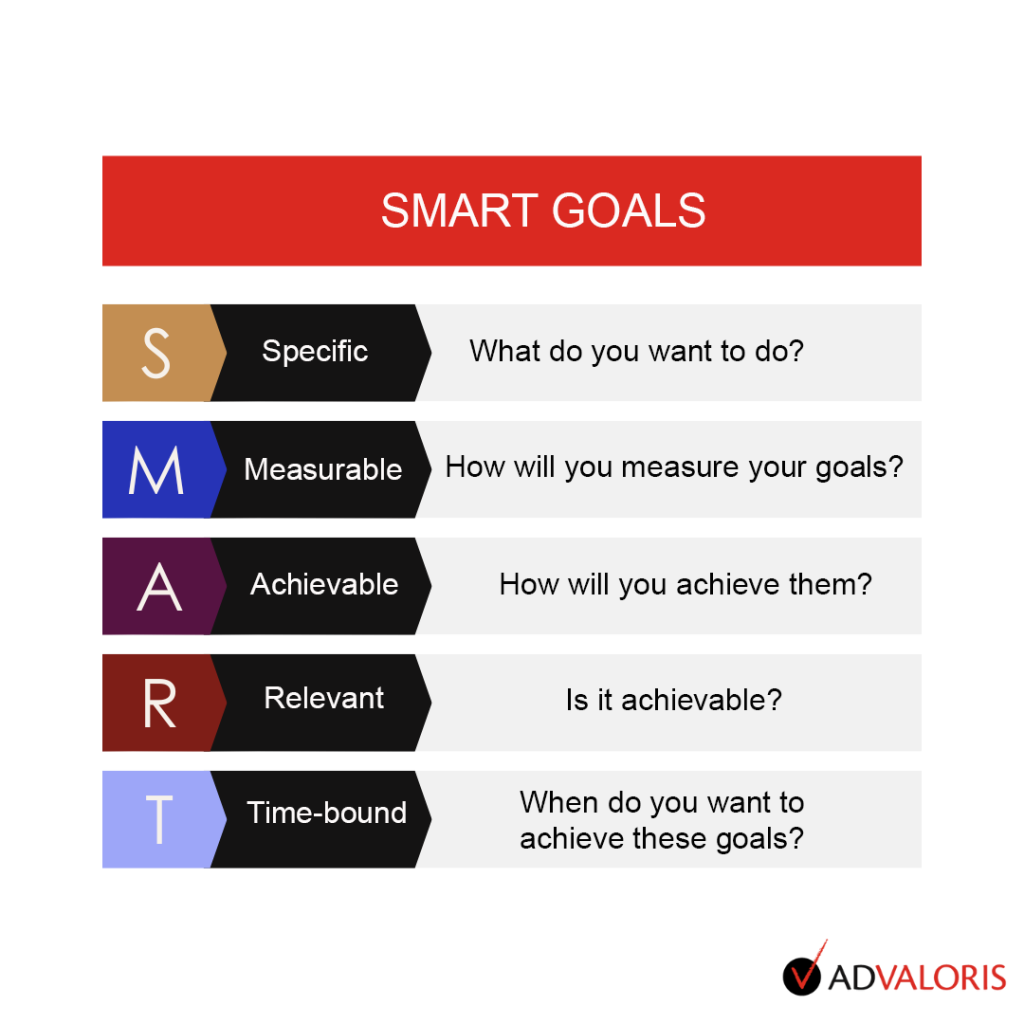A company wishing to develop and prosper cannot do without projects. However in project management, the path to project success is fraught with obstacles.
One of the key principles of business or project success is the definition of clear and precise objectives, which must be done early in the project management process. Highly recommended, the SMART method is one of the management-by-objectives tools that help business leaders, managers, and project managers succeed in their missions. What is a SMART objective? How is it useful in project management? How to set SMART objectives? In this article, we provide all the information to better understand the SMART method.
The SMART methodology: overview

Managing a project or a company without well-defined objectives reduces the chances of success and achieving the best results. Currently, everyone is talking about the SMART model, or ‘intelligent’ in English. It is a management-by-objectives method that involves setting quantitative, qualitative, and time-bound achievable goals right from the project planning phase.
SMART is an acronym where each letter corresponds to a key principle that an objective must meet to optimise its success. A SMART objective is one that is:
- Specific
- Measurable
- Achievable (or Ambitious)
- Realistic
- Time-bound
In summary, the SMART method is an intelligent way, hence its name, to determine objectives suited to a company or project that will be easily understandable by teams and all collaborators.
The SMART method: its origin
The SMART method is a mnemonic technique aimed at setting clear and precise time-bound objectives. It is a concept introduced in 1954 by management specialist Peter F. Drucker in his book ‘The Practice of Management,’ which discusses his work on management by objectives. However, it was in 1981 that economist George T. Doran first used the SMART acronym in his article ‘There’s a S.M.A.R.T. way to write management goals and objectives’ published in the November 1981 issue of Management Review.
In his article, he highlighted the crucial importance of objectives in the business management and project management process, as well as the difficulty managers had in formulating them well. He then advocated for adopting an intelligent technique to set objectives in various fields. The SMART method was born.

Develop and prosper

Defining a SMART objective: the criteria
An objective is considered SMART if it meets the following five criteria:
- S for Specific: your objective should not be too general or vague. A SMART objective must be formulated concretely and precisely to be easily understandable by the entire team. Similarly, a SMART objective must directly relate to the tasks assigned to the responsible person.
- M for Measurable: ensure your objective is qualifiable and quantifiable. Define a value, level, or threshold to achieve. It is an evaluation criterion of the SMART objective without which it would be difficult to achieve and/or evaluate the achievement of the objective given by your team and collaborators.
- A for Achievable: formulate your objective so that it is possible to achieve. Your objective must align with your company’s means and resources (human resources, financial resources, time, employee skills, etc.). Choose an achievable, moderately ambitious, but relevant and feasible objective.
- R for Realistic: here, we are talking about a relevant objective. It involves evaluating the profitability and relevance of your objectives for the company. When setting a SMART objective, the project manager or business leader must ensure that it will not exhaust all resources and that it is realistic/relevant to the project or company situation. For example, is increasing the conversion rate by 25%, which involves significant investment in implementing an inbound marketing strategy, interesting and profitable? Are the allocated means proportional to the importance of the objective?
- T for Time-bound (with deadlines, start date, and deadline): Project management is time-limited. Similarly, a SMART objective must be established according to a determined and relevant schedule to facilitate the prioritisation and hierarchisation of tasks to be accomplished.
The SMART method: areas of use
This method was initially used in business management to define precise objectives for achieving results, typically increasing turnover (marketing plan and strategy, maximising the production chain, acquiring new customers, etc.).
Setting SMART objectives is also common in project management. Each project stage can represent one or more objectives to achieve, coupled with indicators that must also be SMART.
Setting SMART objectives: the advantages
Whether in a project or business management context, establishing SMART objectives offers several strengths.
For the project, a SMART objective:
- Allows better monitoring of project progress;
- Ensures good resource management;
- Assures the achievement of expected results;
- Motivates the team, collaborators, and stakeholders;
- Reduces project risks.
For the company, a SMART objective:
- Increases the company’s turnover;
- Enables good management of collaborators;
- Facilitates the measurement of company performance;
- Ensures better use of resources;
- Allows for coherent decision-making thanks to a well-established strategic line.
Using the SMART method: our advice
There are several steps to setting a SMART objective. Each step leads you to ask the right questions to identify all the criteria to be respected:
- Start by stating a specific and relevant objective;
- Set a deadline (end of 2024, for example);
- Determine your obstacles (resources, competition, etc.);
- Identify a means of verifying the achievement of results (indicators);
- Develop an action plan.
For your project or company, you can trust our team to write your SMART objectives. Our experts guarantee to formulate clear, relevant objectives that are well understood by your entire team.

How to successfully carry out your mission?

4 main aspects of the SMART method
- Presentation and origin of the SMART method
The SMART method, introduced by Peter F. Drucker in 1954 and formalised by George T. Doran in 1981, is a management tool for defining clear and precise project or business objectives. SMART objectives must be Specific, Measurable, Achievable, Realistic, and Time-bound, making them understandable and achievable by teams and collaborators. - Criteria for defining SMART objectives
A SMART objective is Specific, Measurable, Achievable, Realistic, and Time-bound. - Areas of use and advantages
Initially used in business management, the SMART method has extended to project management. It offers numerous advantages such as effective monitoring of project progress, better use of resources, team motivation, and enables increased turnover and coherent decision-making in business. - Implementation of SMART objectives
To set a SMART objective, it is necessary to state a specific and relevant objective, set a deadline, identify possible obstacles, determine a means of verifying the achievement of results, and develop an action plan. These steps ensure the formulation of clear objectives that are well understood by all teams.
Contact us
Write to usFollow us on Linkedin
Follow usAller plus loin
An interview with Antonio Nieto-Rodriguez by Ad Valoris
Interview with Antonio Nieto-Rodriguez, project management specialist...

